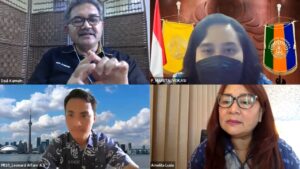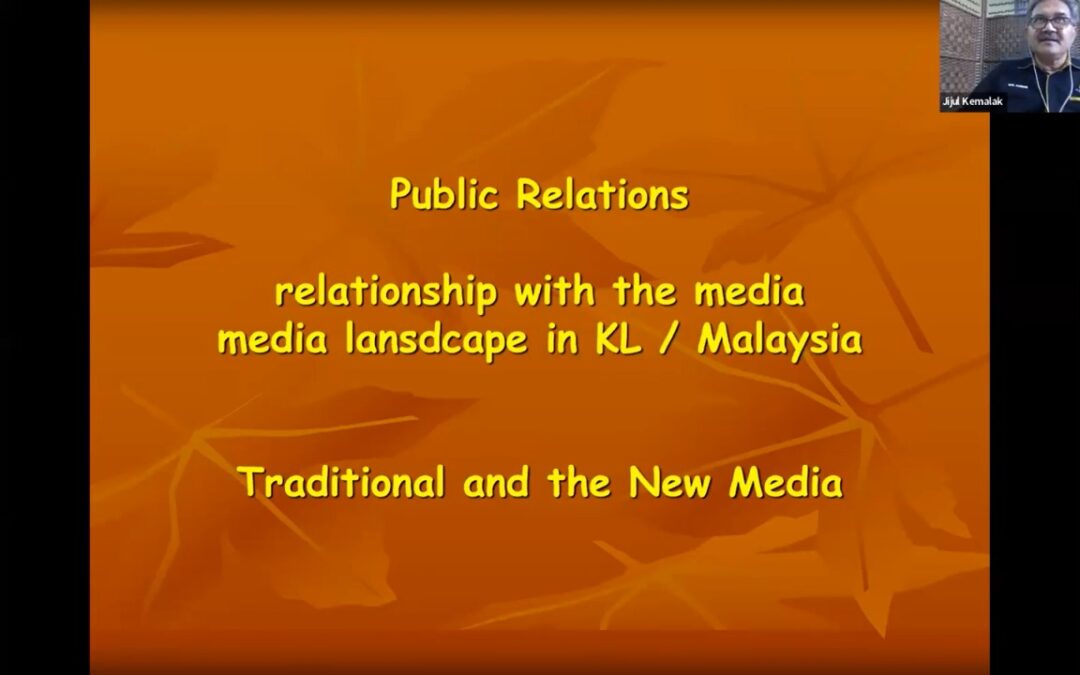Depok-Public Relations Study Program, Vocational Education Program, Universitas Indonesia (UI) held an inbound lecture or guest lecturer entitled “PR Today #3: How to Build a Good Relationship with Media in Kuala Lumpur” on March 23, 2022. This lecture is a series of PR Today activities which include several general lectures and guest lectures which are packaged in the form of webinars and discuss various matters in the public relations industry. In this guest lecture, PR Today invited Dzul Karnain Abdullah, M.A., a lecturer at the Faculty of Creative Writing and Film, National Academy of Arts Culture and Heritage (ASWARA), Malaysia.
In the world of communication, each practitioner has their own role, whether it is in the field of public relations, marketing, journalists, advertising, and broadcasting. Dzul explained how traditional and modern media differ today. “Digital developments that are rapidly increasing have a huge impact on the media. The convenience provided is in the form of how digital devices become an important tool for a practitioner to relate to the media,” said Dzul.
In Malaysia, every media product produced needs to get permission from the competent institutions. For example, a film that requires a permit from the National Film Development Corporation Malaysia (Finas) or a product being advertised must go through the Kementerian Kesihatan Lembaga Iklan Ubat. This shows that there is a similarity in policy between the media in Malaysia and Indonesia.
 (Photo: Dzul explains how IoT has a huge impact on media products)
(Photo: Dzul explains how IoT has a huge impact on media products)
Digital acceleration in industry 4.0 is inseparable from the concept of the Internet of Things (IoT) in all aspects of people’s lives. In the media industry, new products have emerged that contain the IoT concept in them, such as visual radio, audio books, television studios with the help of augmented reality (AR), virtual reality (VR), and visual effects (VFX) technology, also the other media products.
Digital developments also have an impact on the speed of information dissemination. Various information that is spread can be wrong information. Thus, misinformation and disinformation can occur, and hoax news is increasingly spreading. “Before entering this digital era, issues that were considered important were usually in the mainstream media and entered social media. On the other hand, what is being discussed on social media is being promoted to the mainstream media today. This also often happens in the Malaysian media world,” explained Dzul.
 (Photo: Discussion between speakers and participants in public lectures related to media in Indonesia and Malaysia)
(Photo: Discussion between speakers and participants in public lectures related to media in Indonesia and Malaysia)
As a provision to face the massive development of technology and the dissemination of information, we as the audience must be able to respond wisely and responsibly. “The speed with which information emerges, both on social media and in mainstream media today needs to be properly filtered. Disinformation that is continuously conveyed to the public becomes one thing that has a negative and dangerous impact on everyone. I hope that we can respond wisely,” concluded Dzul.

